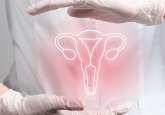Cancer burden rises to 18.1 million new cases and 9.6 million cancer deaths in 2018

The International Agency for Research on Cancer (IARC) has released the latest estimates on the global burden of cancer, comprising the incidence and mortality in 185 countries for 36 types of cancer and for all cancer sites combined. The findings were recently published in CA: A Cancer Journal for Clinicians.
Key findings:
- The global cancer burden is estimated to have risen to 18.1 million new cases and 9.6 million deaths in 2018.
- One in five men and one in six women worldwide develop cancer during their lifetime, and one in eight men and one in 11 women die from the disease.
- Worldwide, the total number of individuals who are alive within 5 years of a cancer diagnosis is estimated to be 43.8 million.
- Cancers of the lung, female breast, and colorectum are the top three cancer types in terms of incidence, and are ranked within the top five in terms of mortality.
Europe accounts for 23.4% of the global cancer cases and 20.3% of the cancer deaths, although it has only 9% of the global population.
The Americas have 13.3% of the global population and account for 21% of incidence and 14.4% of mortality worldwide.
Global patterns show that for men and women combined, nearly half of the new cases and more than half of the cancer deaths worldwide in 2018 are estimated to occur in Asia, in part because the region has nearly 60% of the global population.
Click here to view interactive data visualization tools.
Possible causes:
In contrast to other world regions, the proportions of cancer deaths in Asia and in Africa (57.3% and 7.3%, respectively) are higher than the proportions of incident cases (48.4% and 5.8%, respectively), because these regions have a higher frequency of certain cancer types associated with poorer prognosis and higher mortality rates, in addition to limited access to timely diagnosis and treatment in many countries.
The increasing cancer burden is attributed to several factors, including population growth and ageing as well as the changing prevalence of certain causes of cancer linked to social and economic development.
This is particularly true in rapidly growing economies, where a shift is observed from cancers related to poverty and infections to cancers associated with lifestyles more typical of industrialized countries. More information can be found here.
Worrying rise of lung cancer in women
Lung cancer is a leading cause of death in both men and women and is the leading cause of cancer death in women in 28 countries. The highest incidence rates in women are seen in North America, Northern and Western Europe , China, and Australia and New Zealand, with Hungary topping the list.
“Best practice measures embedded in the WHO Framework Convention on Tobacco Control have effectively reduced active smoking and prevented involuntary exposure to tobacco smoke in many countries,” Freddie Bray, Head of the Section of Cancer Surveillance at IARC, commented. “However, given that the tobacco epidemic is at different stages in different regions and in men and women, the results highlight the need to continue to put in place targeted and effective tobacco control policies in every country of the world.”
Prevention efforts:
A decrease in incidence rates has been observed for lung cancer (particularly in Northern Europe and North America) and cervical cancer (in most regions except Sub-Saharan Africa), which is believed to be largely a result of prevention efforts.
However, the new data show that most countries are still faced with an increase in the absolute number of cases being diagnosed and requiring treatment and care.
Future outlook:
“These new figures highlight that much remains to be done to address the alarming rise in the cancer burden globally and that prevention has a key role to play,” explained IARC Director Christopher Wild. “Efficient prevention and early detection policies must be implemented urgently to complement treatments in order to control this devastating disease across the world.”
Source: www.iarc.fr/en/media-centre/pr/2018/pdfs/pr263_E.pdf





